Expert’s Rating
Pros
- Flagship-level performance
- Gorgeous updated design
- Crease not very noticeable
- Impressive camera chops
Cons
- Speakerphone issues
- Only one OS upgrade promised
- No telephoto lens
Our Verdict
The Motorola Razr 2022 is the first truly tempting foldable from Motorola, fixing the biggest flaws of its predecessors while dropping the price to lower than that of its main rival, the Samsung Galaxy Z Flip 4.
Price When Reviewed
Unavailable in the US
Motorola is back for another stab at the modern foldable phone and the Razr 2022 is the third-generation attempt.
It’s been a couple of years since the last model, and the Razr 2022’s predecessors both had some issues that need ironing out.
The good news is that the main complaints, including performance, cameras and most importantly, price, have all been heavily improved to offer a tempting option to compete with the Samsung Galaxy Z Flip 4, the dominating clamshell foldable in Western markets.
The question is, has Motorola done enough? You might be surprised…
Design & Build
- Less of a Razr feel
- No chin
- Heavier
- Side-mounted fingerprint scanner
The Razr 2022 is the same but different when compared to the 2020 Razr 5G. That was unmistakably a Razr but this year the iconic chin is completely gone, for better or worse.
On the one hand, it no longer gets in the way of using the main screen when the phone is unfolded. But it also means the phone loses some of its personality, looking similar to other clamshell foldables on the market.
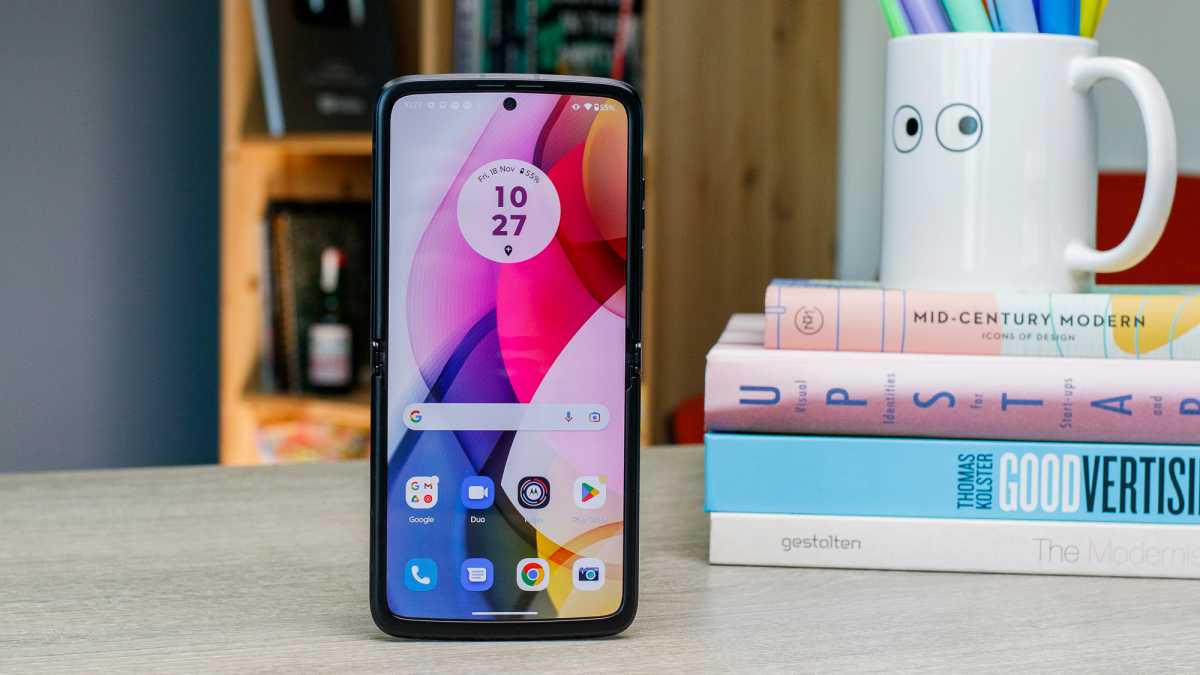
Henry Burrell / Foundry
Still, the phone remains slick and desirable and it’s clear Motorola has refined things further with no visible screws on the hinge, for example.
It is slightly weightier at 200g, and it’s fairly wide even when folded, closely mirroring the width of the iPhone 14 Pro Max at 79.8mm wide. Of course, it doesn’t matter as much when the thing folds down to a pocketable 86.5 x 79.8 x 17mm, but it’s worth noting.
Whether you like the new, slightly glittery, satin-textured rear cover will be down to personal preference, but previous models were far too slippery, so this does add a bit more grip. This applies to the lower section, whereas the top part with the secondary screen is all glass.
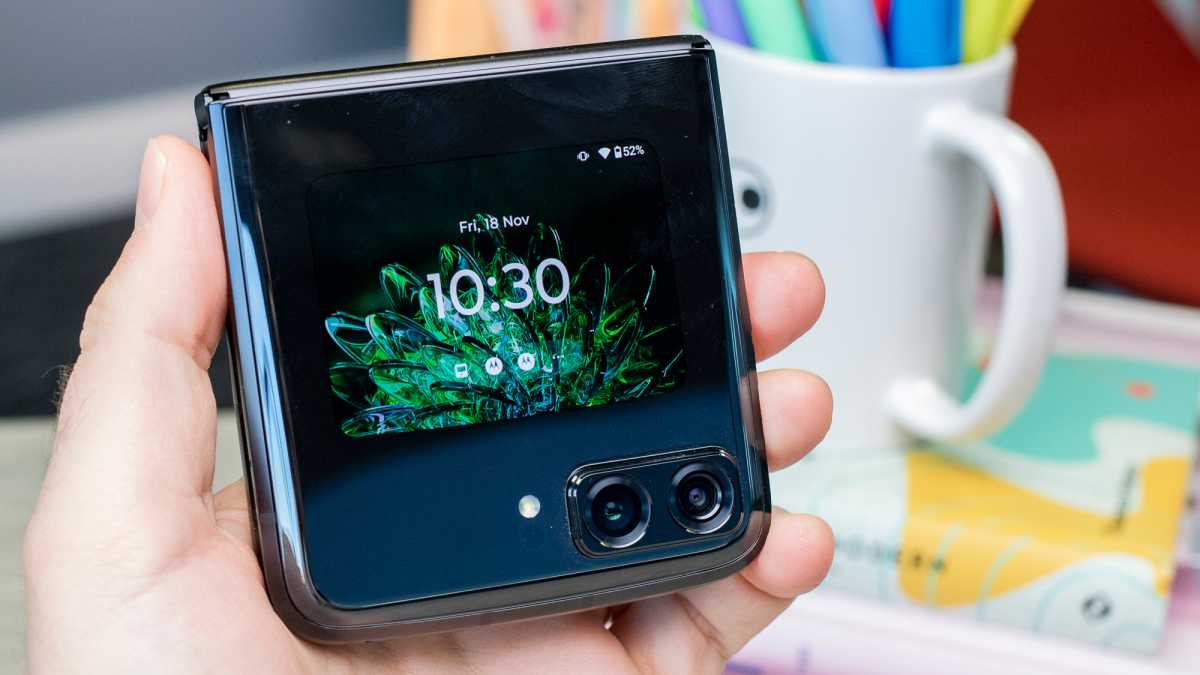
Henry Burrell / Foundry
One thing I’m not so keen on is the way the power button and volume buttons are all grouped into a small space on the right side. The folding nature means the power button is either on top or below depending on whether the phone is open or closed.
This would be easily remedied if the volume buttons were on the left side of the phone. The current positioning can also make it tricky to unlock the phone using the fingerprint scanner embedded within the power button, as I found myself constantly resting my finger on the volume buttons instead.
It’s also a little too high up the phone (when open) for it to be comfortable and registers a lot of accidental brushes of fingers, so there’s certainly some work to be done there.
There’s still no IP waterproof rating unlike Samsung’s popular Galaxy Z Flip 4 so you’ll have to make do with a water-repellent coating once again. It should be okay in very light rain, but I wouldn’t trust it in anything more.
Displays & Audio
- Crisp, bright internal 6.7in AMOLED display
- No visible crease when in use
- Large outer display is handy for certain tasks
- Issues with microphone in some calls
When it comes to the displays, it’s a story of two halves; while there have been significant upgrades to the internal foldable display, the exterior 2.4in display is essentially the same as its predecessor.
Let’s start with the big foldable display. It’s larger this time around at 6.7in, giving the likes of the Google Pixel 7 Pro and iPhone 14 Pro Max a run for their money, complete with a super-fast 144Hz refresh rate and HDR10+ support. It’s ideal for watching videos on the punchy AMOLED screen.
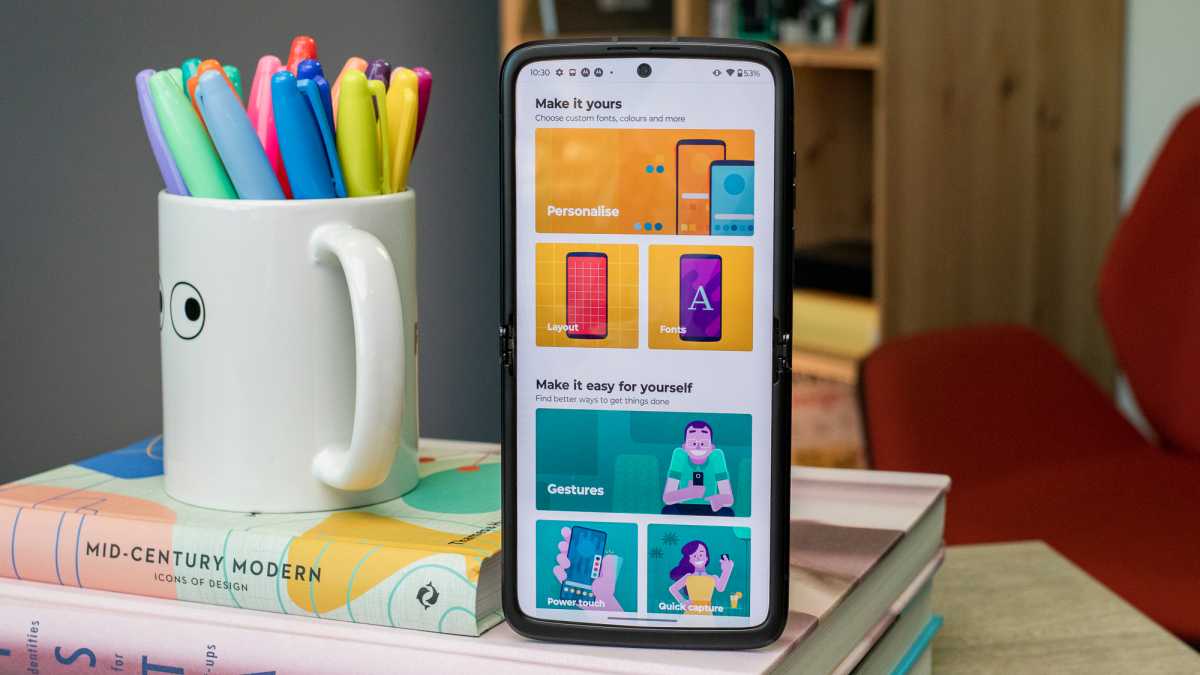
Henry Burrell / Foundry
That means that while the phone is compact in its folded form, it’s fully in big phone territory when unfolded, offering the big-screen experience without the associated size and weight. It’s bright, crisp and detailed, with no real downgrades compared to standard slab phones.
In fact, the crease – which has plagued foldables since their inception – is nearly unnoticeable on the Razr, making it instantly more appealing than the likes of the Galaxy Z Flip 4. With a new hinge system at play, the indentation is barely noticeable even when running a finger over it, and when looking front-on, it’s difficult to spot the curvature.
Glancing from the sides will reveal a slight crease, but when was the last time you looked at your phone side-on?
It’s truly a phenomenal feat of engineering and the Motorola team should give itself a pat on the back for that one.
As noted, the external 2.7in HFD+ display remains unchanged, but that’s not a huge deal. It offers a distinctly different experience from the 1.7in display on the Z Flip 4, with the ability to reply to incoming messages, open apps (albeit awkwardly), control music and even access high-quality cameras for selfies.
Core display experience aside, the foldable nature of the phone had the bonus effect of stopping me from mindlessly scrolling as often as I usually would. The barrier of having to first unfold the phone makes me question whether I really need to use my phone at that point.
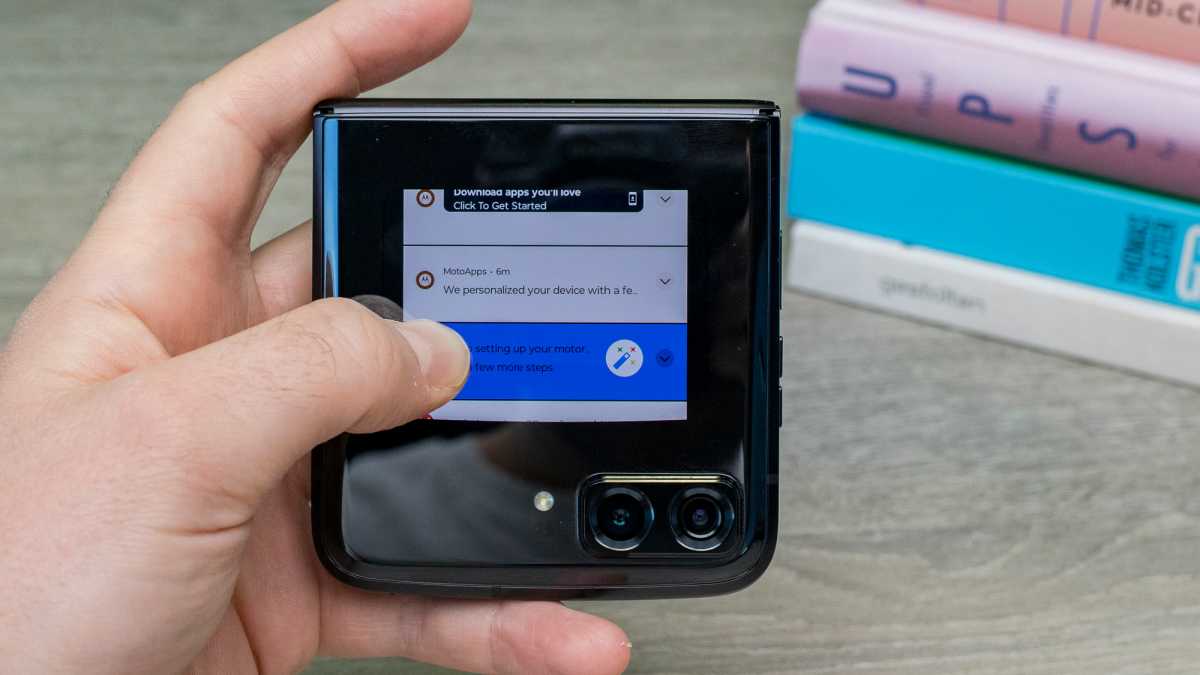
Henry Burrell / Foundry
When texts and other notifications came through, I could simply check and respond on the exterior display and move on. It’s not perfect for texting admittedly, with a relatively small on-screen keyboard within that 2.7in display, but it worked well for quick, simple replies.
As you might expect, the audio performance isn’t that impressive on the Razr, but it’ll suffice for watching TikToks and YouTube videos on the go. Dolby Atmos support provides a high-quality audio experience with connected headphones, with tailored modes for everything from music to movies to podcasts.
The big disappointment is the loudspeaker – while it’s plenty loud enough to take calls on speakerphone, for some reason, participants can’t hear me with the functionality active, complaining that I sound like I’m “underwater”. It happened with different people on different calls in different locations, so it’s certainly not down to signal either.
It may sound like a small thing, but as someone that puts calls on speaker fairly often, it’s a frustrating annoyance that I hope can be fixed via software update.
Specs & Performance
- Snapdragon 8+ Gen 1
- Boosted performance compared to the previous Razr
- 5G, Wi-Fi 6E & Bluetooth 5.2
The Motorola Razr 2022 sports Qualcomm’s very power-efficient Snapdragon 8+ Gen 1 chipset. It was the very best chipset on the market at launch, though it’s worth noting that it has recently been replaced by the Snapdragon 8 Gen 2.
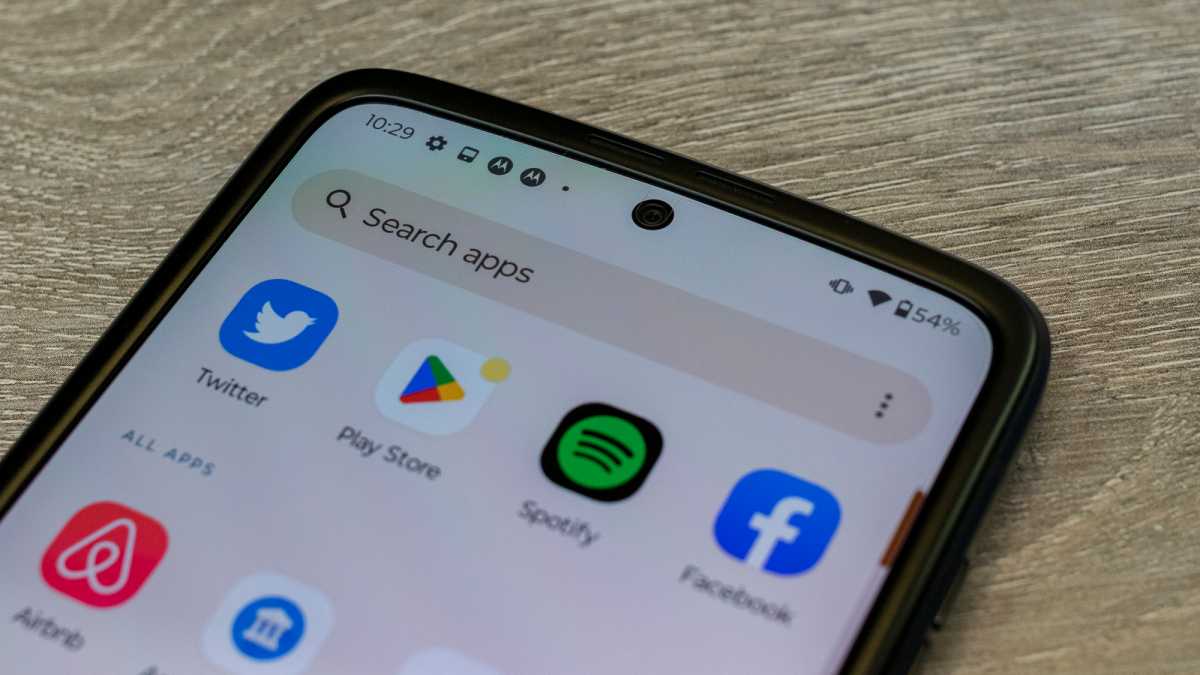
Henry Burrell / Foundry
That said, the pairing of the 8+ Gen 1 and 8GB of RAM makes for a speedy experience on the Razr, further enhanced by that buttery smooth 144Hz refresh rate that makes everything feel instantaneous. There was no hint of stutter or lag no matter what I was doing on the phone, and considering its sleek form factor, that’s pretty impressive.
It’s not a dedicated gaming phone and as such, it should come as no surprise that it can get hot over longer gaming sessions, but for the occasional game of Call of Duty Mobile or PUBG, it should more than suffice. We’ve got a rundown of the best gaming phones if gaming really is your thing.
Simply put, the 2022 Razr gets a massive upgrade performance compared to the mid-range Snapdragon 765G chipset that shipped with the previous Razr 5G, making it worth its premium price tag. If you’re curious, here’s how it stacks up to the foldable (and non-foldable) competition in benchmarking apps:
Performance aside, you get the latest and greatest connectivity including 5G, Wi-Fi 6E and Bluetooth 5.2, and there’s 256GB storage as standard in the UK – though 128- and 512GB models are available in some other regions.
Cameras
- Big boost to camera performance
- New ultrawide lens on the rear
- Can use rear cameras as a selfie camera
Performance wasn’t the only issue with the original Razr – the camera setup was another weakness, with a single rear-facing 48Mp snapper and an internal 20Mp snapper. They were fine, but nothing to write home about. It’s safe to say that has changed with the Razr 2022.
Now don’t get your hopes up and expect the same multi-camera setup as the likes of the Samsung Galaxy S22 Ultra as the foldable form factor simply doesn’t allow for it, but the camera offering is much more competitive this time around.
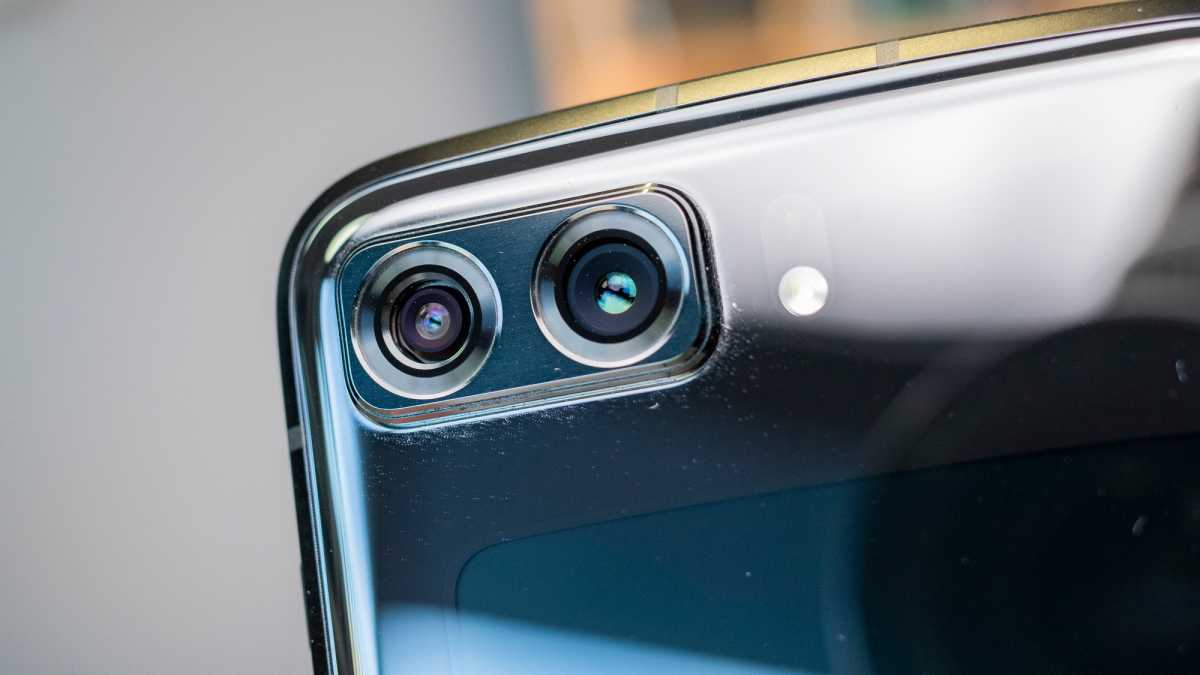
Henry Burrell / Foundry
The main star of the show is the rear-facing 50Mp snapper, with an aperture of f/1.8 and OIS. While a 2Mp jump doesn’t sound like much, the sensor has been upgraded to offer something near flagship level.
It’s capable both during the day and, much to my surprise, at night too, with decent nighttime performance without the need for a tripod. It certainly helps that, as with the Z Flip 4, you can half-fold the Razr and stand it nearby, ideal for both selfies and videos.
It’s a huge upgrade that makes the Razr a much more attractive option, with results that can compete with other high-end competition.
That’s flanked by an all-new 13Mp 120-degree ultrawide camera, adding a wider perspective to shots. It’s not quite as impressive as the main sensor, with a notable drop in overall quality when viewing images side-by-side. Images are softer overall, and lack the crisp detail of the main sensor. Still, it’s more than enough for social media sharing – just don’t try and use it for nighttime photography with an aperture of f/2.2.
The rear camera has also had a bump in the video department, going from 4K@30fps to 8K@30fps with a 4K@60fps option also available.
There is a 32Mp internal selfie camera, but with the ability to close the phone and use the exterior cameras to take selfies using the outer display as a viewfinder, I find it to be pretty redundant. The images from the main sensor are, unsurprisingly, more detailed with better dynamic range and vibrancy, but it’ll more than suffice for video calling.
Here are a few snaps to show what the camera setup is capable of:
Battery Life & Charging
- Comfortable all-day battery life
- 3,500mAh battery
- 30W charging
Considering the form factor on offer from the Razr and the fact the battery tops out at 3,500mAh, I was pleasantly surprised by just how long it could last, no doubt benefiting from the impressive power efficiency of the Snapdragon 8+ Gen 1.
I wouldn’t consider myself a power user by any means, but I do regularly text, call and scroll through social media on my phone, and apps like TikTok in particular usually hammer battery life.
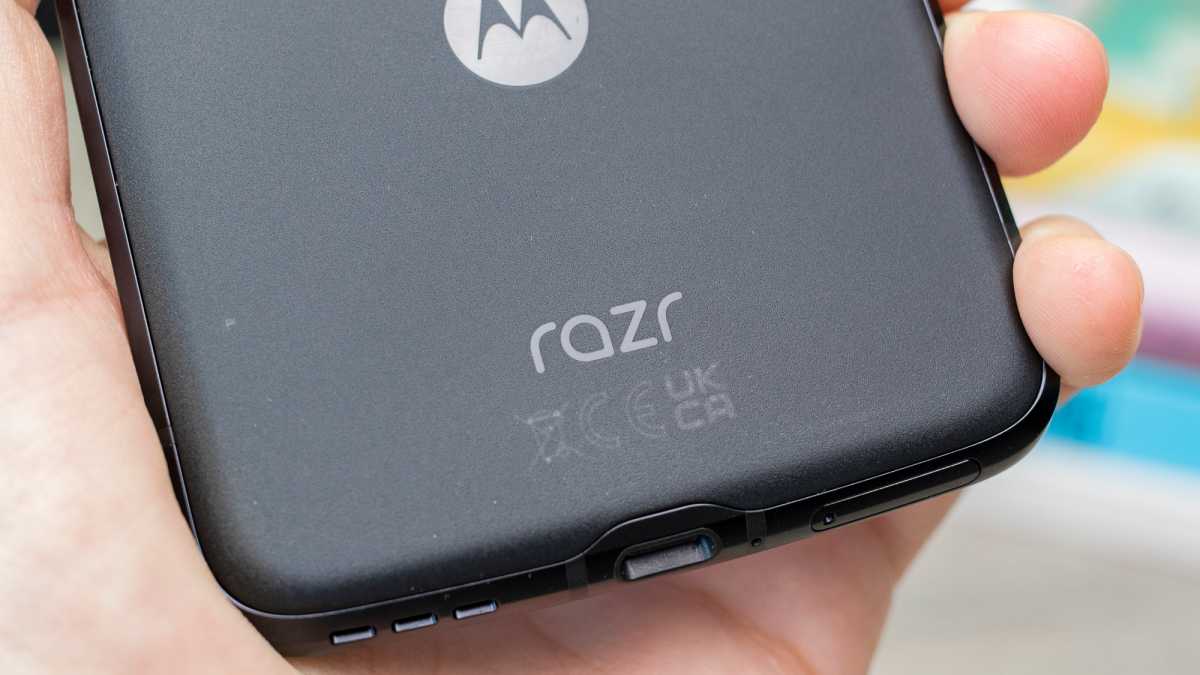
Henry Burrell / Foundry
However, I found that I’d comfortably last all day on a single charge, getting to bed after a 14-16 hour day with around 30 percent battery left in the tank. That’s not enough for a second full day, but it certainly helps alleviate battery anxiety, and makes for a nice change compared to the lacklustre battery life of the original.
It achieved a fairly decent nine hours nine minutes in our PCMark battery test benchmark, comfortably beating the 7hrs 42 minutes of the foldable Galaxy Z Flip 4, though unsurprisingly it can’t compete with standard candybar phones like the Sony Xperia 10 IV and its crazy 24:52 battery life score.
Still, the inclusion of 30W fast charging is welcome, providing 30% charge in 15 minutes, 59% in 30 minutes and a full charge in just over an hour. The 30W charging brick comes in the box too, a nice change compared to a growing number of phone manufacturers.
Software & Apps
- Android 12
- Moto Actions are handy
- Only one OS upgrade promised
Motorola keeps things simple on the software front. The phone ships with Android 12 but the firm sticks with a stock-like experience, avoiding the annoyance on other Android phones where you have duplicate apps, bloatware and a frustrating user experience.
The likes of TikTok and Facebook are pre-installed which is more than normal but it’s likely many users will want these anyway.
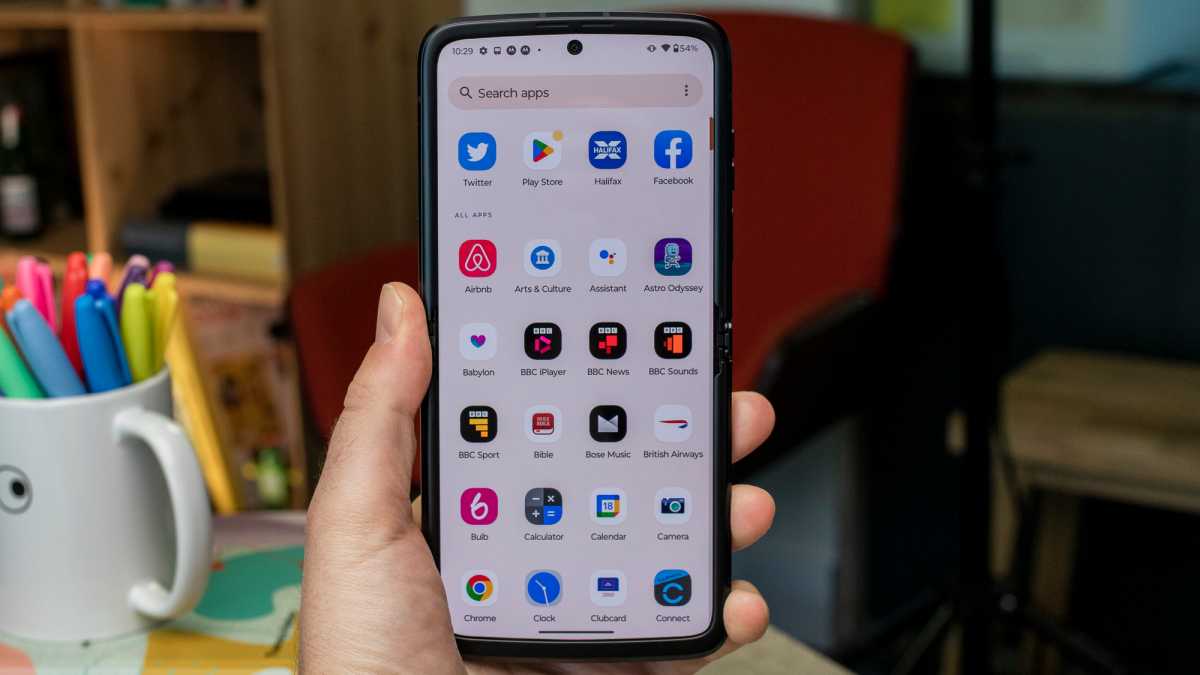
Henry Burrell / Foundry
Otherwise, there are just a couple of basic games and the very useful Moto app which contains various tips, settings and gestures. Doing a karate chop gesture to activate the torch is a personal favourite of mine. Yes, really.
I like Motorola’s touches dotted around the OS such…
